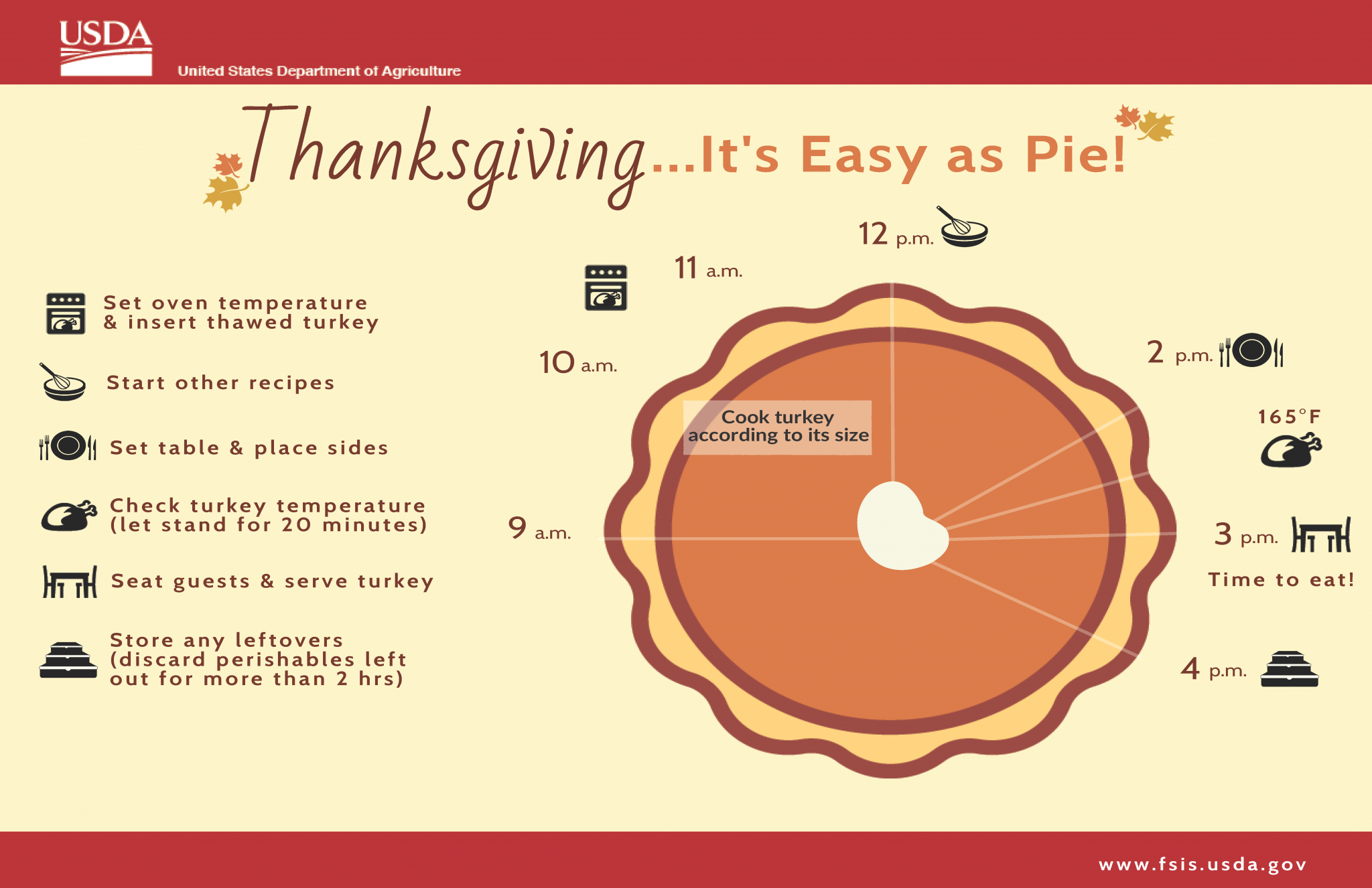
Practicing food safety during Thanksgiving
The holiday season would not be the same without the traditional food and dishes that are served each year. However, with our stomachs ready to tackle the dinner table, individuals should also note the significance of food safety while preparing their Thanksgiving meals.
One way to ensure protection when preparing the turkey for the family is following the four steps to food safety which include clean, separate, cook and chill.
“You want to follow these rules every time you're cooking every day, but on Thanksgiving, it is especially important,” said Laura Scott, a food safety expert for USDA.
Those prepping the food must remember to wash their hands and keep counter tops, utensils and plates clean. The USDA recommends cleaning counter tops with soap and water and sanitizing after.
“Separate means preventing cross contamination. So again, that's raw meats away from other foods and also kind of keeping those pieces away from other parts of your kitchen,” Scott said.
She went on to explain that no matter what kind of meat is being cooked, the only way to tell that it's cooked thoroughly is with a thermometer.
“With a turkey, you want to make sure it reaches 165 degrees internally,” Scott said. “You check three points on the bird that’s the thickest part of the breast, the innermost part of the wing and the innermost part of the thigh. And if those three points reach 165, then it's good to go.”
The final step to follow is chill, which ensures that leftovers are put away properly. To make sure that food doesn't enter the “danger zone,” it must be packed away in shallow containers within two hours.
“After the two hour mark, it can enter the danger zone which is between 40 and 140 degrees, and in that window, that's where the dangerous bacteria can grow with the food,” Scott said.
One common mistake many make when thawing the turkey is rinsing it under warm water. The USDA recommends thawing it in the refrigerator because it allows for slow and safe thawing and will need about 24 hours for every four to five pounds of turkey. If individuals are set on thawing the turkey with water, the USDA recommends a cold water bath.
“We recommend a cold water bath and that you would change the water out every 30 minutes until the turkey is thawed out” Scott said. “But when you thaw the turkey with this method, you want to cook the turkey immediately after it's thawed.”

Another practice many go by while cooking turkey is rinsing it off before it is cooked. The USDA recommends not doing this to prevent cross contamination.
“You don't need to wash or rinse your turkey or any kind of poultry. What this can actually do is splash bacteria around the kitchen, which can then cross contaminate other foods,” Scott said. “I think some people do that because they want to rinse off maybe slime or bacteria that they think might be on the surface of the turkey. But really, the only way to actually remove bacteria from the turkey is to cook it.”
For more tips on meal and food safety, visit www.foodsafety.gov/ or call the USDA Meat and Poultry Hotline at 1-888-MPHotline (1-888-674-6854). The hotline will be open from 8 a.m. to 2 p.m. Eastern on Thanksgiving Day.











